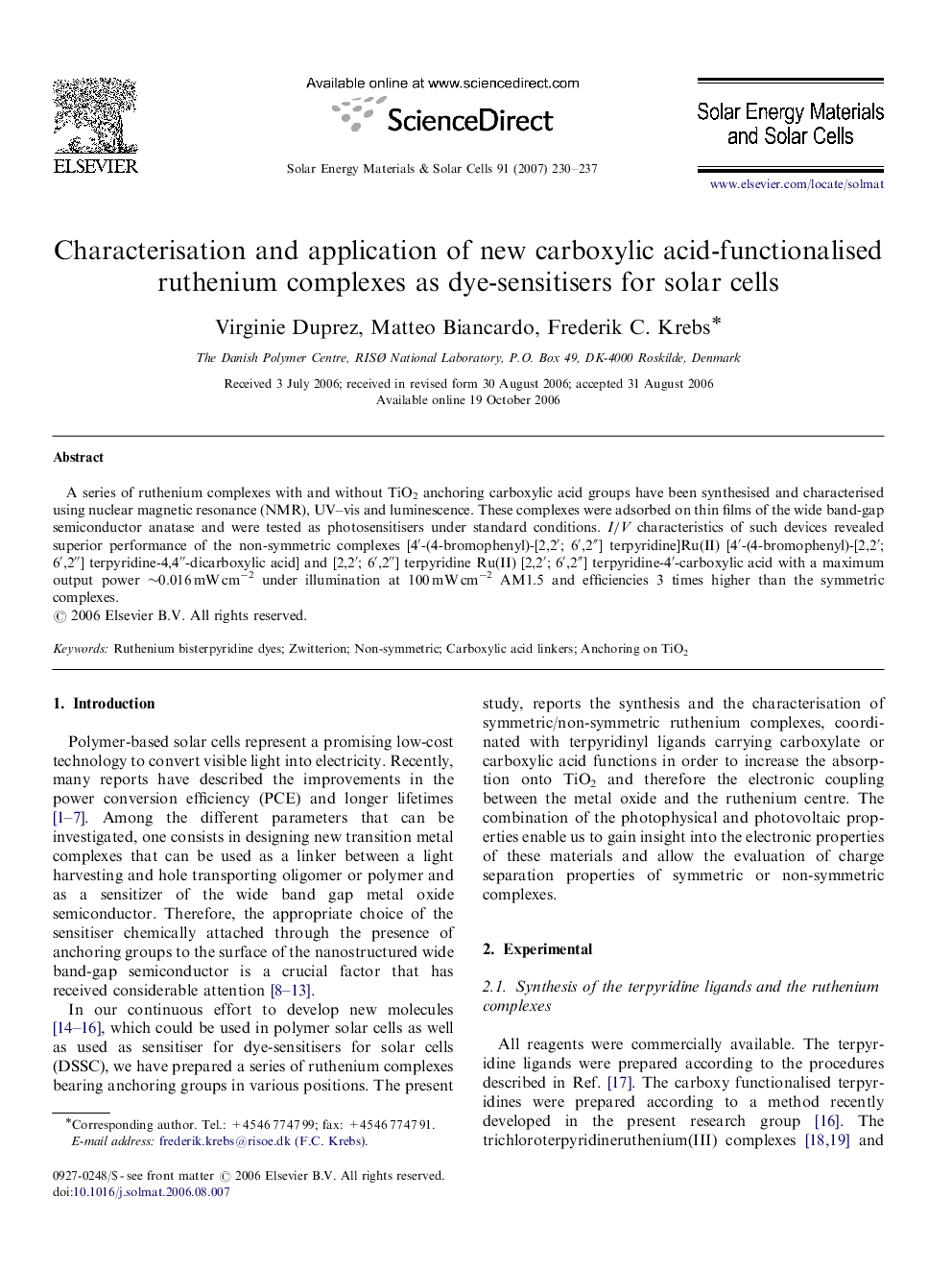| Article ID | Journal | Published Year | Pages | File Type |
|---|---|---|---|---|
| 80747 | Solar Energy Materials and Solar Cells | 2007 | 8 Pages |
A series of ruthenium complexes with and without TiO2 anchoring carboxylic acid groups have been synthesised and characterised using nuclear magnetic resonance (NMR), UV–vis and luminescence. These complexes were adsorbed on thin films of the wide band-gap semiconductor anatase and were tested as photosensitisers under standard conditions. I/V characteristics of such devices revealed superior performance of the non-symmetric complexes [4′-(4-bromophenyl)-[2,2′; 6′,2″] terpyridine]Ru(II) [4′-(4-bromophenyl)-[2,2′; 6′,2″] terpyridine-4,4″-dicarboxylic acid] and [2,2′; 6′,2″] terpyridine Ru(II) [2,2′; 6′,2″] terpyridine-4′-carboxylic acid with a maximum output power ∼0.016 mW cm−2 under illumination at 100 mW cm−2 AM1.5 and efficiencies 3 times higher than the symmetric complexes.
